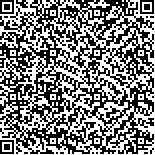| 摘要: |
| UAVs have witnessed unprecedented levels of growth during the last decade. Projections and predictions suggest that during the next 5-10 years growth will continue to rapidly increase, while the spectrum of UAV utilization will be dominated by civil and public domain applications, ranging from search and rescue, emergency response, disaster management, infrastructure monitoring and protection, precision agriculture, surveillance and reconnaissance, cartography, etc.
This special issue on UAVs consists of six invited and peer reviewed papers. The main focus of the issue is on multi-UAV teams, a research area that has attracted attention due to the fact that a team of unmanned vehicles may accomplish, collectively, tasks that may be difficult or impossible by a single UAV to complete. The first four papers focus on: Flocking control of a fleet of UAVs; distributed output feedback stationary consensus of multi-vehicle systems in unknown environments; consensus controller for multi-UAV navigation; and ranging-aided relative navigation of multi-platforms. Collectively, these four papers offer insight to the state of the art in this important topic. The fifth paper on nonlinear robust control of a quadrotor helicopter with finite time convergence addresses challenges related to UAV navigation/control, while the last paper on experimental evaluation of a real-time GPU-based pose estimation system for autonomous landing of rotary wing UAVs introduces a comprehensive methodology that is suitable for real-time autonomous takeoff and landing from stationary and moving ground platforms. |
| 关键词: |
| DOI: |
|
| 基金项目: |
|
| Editorial of special issue on unmanned aerial vehicles (UAVs) |
| K. P. Valavanis |
| (DU Unmanned Systems Research Institute (DU2SRI), University of Denver (DU), Denver, CO 80208, U.S.A.) |
| Abstract: |
| UAVs have witnessed unprecedented levels of growth during the last decade. Projections and predictions suggest that during the next 5-10 years growth will continue to rapidly increase, while the spectrum of UAV utilization will be dominated by civil and public domain applications, ranging from search and rescue, emergency response, disaster management, infrastructure monitoring and protection, precision agriculture, surveillance and reconnaissance, cartography, etc.
This special issue on UAVs consists of six invited and peer reviewed papers. The main focus of the issue is on multi-UAV teams, a research area that has attracted attention due to the fact that a team of unmanned vehicles may accomplish, collectively, tasks that may be difficult or impossible by a single UAV to complete. The first four papers focus on: Flocking control of a fleet of UAVs; distributed output feedback stationary consensus of multi-vehicle systems in unknown environments; consensus controller for multi-UAV navigation; and ranging-aided relative navigation of multi-platforms. Collectively, these four papers offer insight to the state of the art in this important topic. The fifth paper on nonlinear robust control of a quadrotor helicopter with finite time convergence addresses challenges related to UAV navigation/control, while the last paper on experimental evaluation of a real-time GPU-based pose estimation system for autonomous landing of rotary wing UAVs introduces a comprehensive methodology that is suitable for real-time autonomous takeoff and landing from stationary and moving ground platforms. |
| Key words: |

